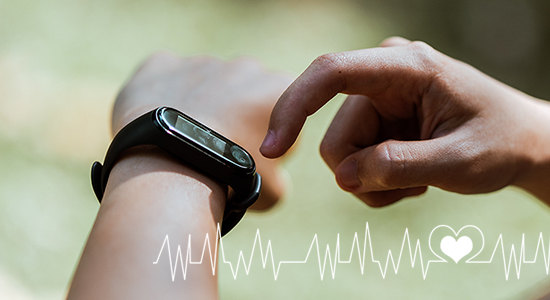It’s no secret that the benefits of rowing exercise are far-reaching. It’s easy to use the rowing machine to create a variety of workouts to spike your heart rate, but heart rate training will help you row smarter to achieve specific fitness goals.
What is heart rate training?
Heart rate training uses your heart rate or beats per minute (bpm) as a guide to hit a certain rowing intensity. You use a heart-rate monitor to train at a specific effort level for a set amount of time.
It is a different way to be successful at rowing. Heart rate training allows for continued improvements over time. It doesn’t have to be rowing as hard as you possibly can.
Whether you aim to build speed, endurance, or power, training in the right heart rate zone will carry your fitness goals right over to the road.
Table Of Contents
- Exercise Physiology
- Exercise Intensity and Heart Rate Training Zone
- Exercise Objective
- Heart Rate Training Metrics
- The Best Heart Rate Monitor for Rowing
- Reap the Rewards of Heart Rate Training
Before diving into exercise intensity and your fitness objectives, let’s take a look at exercise physiology. As knowing how your body responds to physical activity and how it adapts to repeated bouts of physical activity over time can help you reach a higher level of fitness and health in the long term.
1. Exercise Physiology
The principle fuels the body uses to produce energy over prolonged periods are derived from the body’s stores of fat, carbohydrates, or protein. The body converts these fuels into energy by one of two processes, the Aerobic metabolic process, and the Anaerobic metabolic process.
Aerobic
The aerobic metabolic process produces energy by consuming fuel stores in the presence of oxygen (supplied by the flow of blood) producing bi-products, carbon dioxide, and water (which are expelled by respiration and perspiration).
As exercise intensity is increased, more energy is required to perform the work and more oxygen is consumed. Hence, an increase in breathing and heart rate.
Similarly, as exercise intensity increases, the body recruits different fuel stores as the main source of fuel.
Anaerobic
The anaerobic metabolic process occurs when there is insufficient oxygen in the blood supply to produce energy by the aerobic metabolic process alone. The anaerobic process consumes carbohydrates as its primary source of fuel and does so in the absence of oxygen to produce a product called lactate.
It is lactate that causes fatigue and muscle soreness associated with excessive exercise. At high exercise intensities, lactate will quickly build in the muscles until exercise must cease.
2. Exercise Intensity and Heart Rate Training Zone
It is common to measure exercise intensity in terms of a percentage. This percentage figure may be seen as the range of sustainable exercise with 0% representing rest and 100% representing maximal sustainable output. The maximal sustainable output is the level below which exercise must cease due to lactate build-up and fatigue.
Below, you’ll find exactly which heart rate zones you need to reach your goal.
Low Intensity
At low intensities of exercise (60 – 70% of max HR), the body will function purely aerobically and burn fat stores as the primary source of fuel.
Talk test: You can talk and it is comfortable.
Moderate Intensity
At moderate intensities of exercise (70 – 80% of max HR), the body will function purely aerobically and burn a combination of fat stores and carbohydrate stores as its primary source of fuel.
Talk test: You can talk but it is not comfortable.
High Intensity
At high intensities of exercise (> 80% of max HR), the body will function aerobically and burn carbohydrate stores as its primary source of fuel. At this level, lactate will accumulate in the bloodstream faster than the body is able to expel it (through respiration, sweat, the liver, and kidneys). Eventually, the lactate levels will increase to a level where exercise must stop.
Talk test: You can’t talk comfortably.
You can take advantage of these various intensity levels to optimize the achievement of your specific fitness goals. Follow the instructions of the popular Youtube Coach Training Tall to know how to perform heart rate training on a rowing machine.
3. Exercise Objective
You may use various intensities to achieve a range of exercise objectives. For example,
Fat Burn Training – Weight Maintenance
The main objective is to burn fat stores as the primary source of fuel, reducing weight.
To achieve this exercise objective, low exercise intensities (60 – 70%) and longer exercise durations are required.
Recent research has shown that efficient weight maintenance training is maximized by including short bursts of high-intensity training within your fitness program.
Aerobic Training – Cardio Vascular
The main objective is to improve the efficiency with which the cardiovascular system can supply oxygen, enhancing endurance and well-being.
To achieve this exercise objective, mode 80% rate intensities (70 – 80%) and moderate durations are required.
Maximal Training – Fatigue Tolerance
The main objective is to improve the recovery of the aerobic system after short bursts of intensive exercise.
To achieve this exercise objective, high intensities (>80%) are required for short sharp bursts followed by a period of recovery to avoid the onset of fatigue.
4. Heart Rate Training Metrics
Any exercise is better than no exercise. But to be sure you’re getting the most from your workout yet staying at a level that’s safe for you, you need to measure and control your heart rate during workout according to science.
One of the most overlooked aspects for those that are beginning their heart rate training in the rowing journey is grasping the understanding of the metrics of heart rate. And the main metrics to be aware of are your Maximum Heart Rate (MHR), Resting Heart Rate (RHR), and Target Heart Rate (THR).
4.1 Maximum Heart Rate (MHR)
What is Maximum Heart Rate (MHR)?
Maximum heart rate is the greatest number of beats per minute your heart can possibly reach during all-out strenuous exercise.
Maximum heart rates vary from one person to another, and while they are not an indicator of physical fitness, knowing what your max HR is can be very useful when deciding what types of workouts or training you want to do.
How to Calculate Your MHR?
Your maximum heart rate can loosely be estimated by subtracting your age from 220.
4.2 Resting Heart Rate (RHR)
What is Resting Heart Rate (RHR)?
Your resting heart rate is the number of times your heart beats per minute when you’re at rest. It helps to know your RHR.
How to Measure Your RHR?
It’s super easy to read your RHR on a wearable activity tracker makes.
But if you don’t use a fitness tracker, you can find your pulse (heart rate) on your own. You will likely find that it is easy, convenient, and more consistent.
You can get your RHR by counting the number of beats in a minute. The steps are as follows:
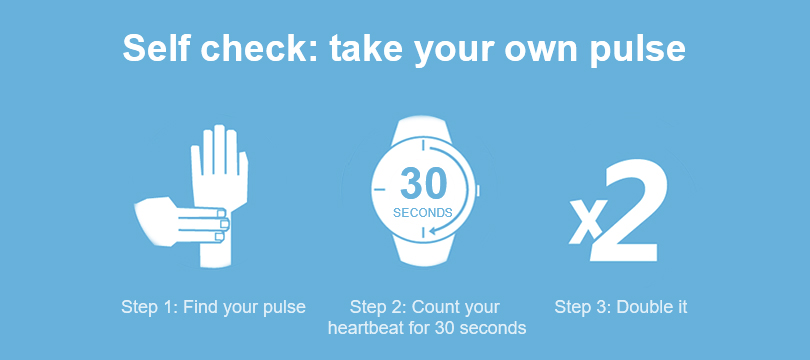
- Take your pulse on the inside of your wrist, on the thumb side.
- Use the tips of your index, second and third fingers and press lightly over the artery.
- Count your pulse (the beats) for 30 seconds and multiply by 2 to get your beats per minute.
The average resting heart rate is between 60 and 100. The more fit you are, the lower your resting heart rate; for very fit people, it’s in the range of 40 to 50 beats per minute.
4.3 Target Heart Rate (THR)
What is Target Heart Rate (THR)?
Your target heart rate is a range of numbers that reflect how fast your heart should be beating when you exercise. “A higher heart rate is a good thing that leads to greater fitness,” says Johns Hopkins cardiologist Michael Blaha, M.D., M.P.H.
How to Measure Your THR?
Target heart rate is generally expressed as a percentage (usually between 50 percent and 85 percent) of your maximum safe heart rate. The maximum rate is based on your age, as subtracted from 220.
So for a 50-year-old, the maximum heart rate is 220 minus 50, or 170 beats per minute. At a 50 percent exertion level, your target would be 50 percent of that maximum or 85 beats per minute. At an 85 percent level of exertion, your target would be 145 beats per minute.
Therefore, the target heart rate that a 50-year-old would want to aim for during exercise is 85 to 145 beats per minute.
The table below shows target heart rate zones for different ages. The figures are averages, so use them as a general guide.
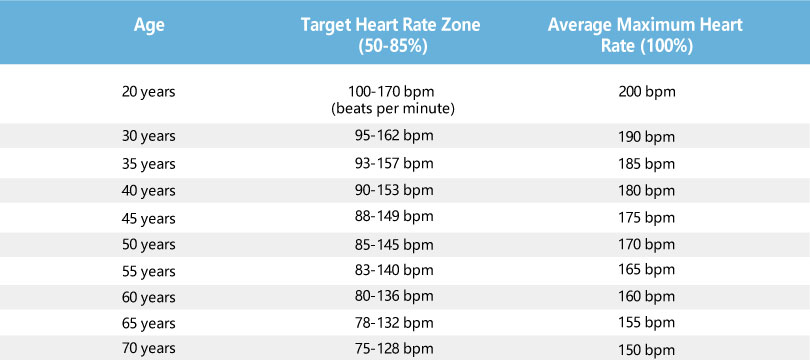
In the age category closest to yours, read across to find your target heart rates. Target heart rate during moderate-intensity activities is about 50-70% of maximum heart rate, while during vigorous physical activity it’s about 70-85% of maximum.
During exercise, you can monitor your heart rate and try to reach this target zone. Doctors also use target heart rate to interpret the results of a cardiac stress test.
5. The Best Heart Rate Monitor for Rowing
Thanks to technology, heart rate monitors (HRMs) are more affordable and accessible than ever, heart-rate training is becoming increasingly popular today.
Back in the 1970s and earlier, HR monitors were only used by elite athletes. Now, anyone from recreational rowers to professionals can track heart rate. This will help rowers exercise in the accurate zone to achieve their specific fitness goals.
5.1 Why Workout with a Heart Rate Monitor?
Tracking your heart rate gives you additional benefits like the ability to stay in target heart rate zones while exercising. Now that you have a target, you can monitor your heart rate to make sure you’re in the zone.
Exercise has very different effects on the body depending on how high you push your heart rate and for how long.
Rowing smarter means using heart rate data to guide your rowing workouts. Sometimes you might want to keep your heart rate relatively low to burn fat or pace yourself for a longer workout, whereas other times you want to push it higher for different health benefits, like building stamina and endurance.
Another reason to own an HRM is to keep an eye on your resting heart rate with a device that will automatically record it for you.
5.2 Different Types of HRMs for Heart Rate Training
Nowadays, more heart rate monitors have made their way into fitness trackers than ever before. There are many types and styles of HRMs available on the market. Major types include handle grips, chest straps, armbands, watches and earbuds.
HRM Handle
Some rowing machines will come with the handle grip contact heart rate monitors.
The touch HRM handle communicates your heart rate data directly from the conductive handle grips and then via Bluetooth technology transmits your real-time heart rate to the console of your connected rower.
However, if you are a serious data tracker, it’s not recommended. Since it’s hard for you to guarantee the consistency of your heart rate tracking when you step down the rower.
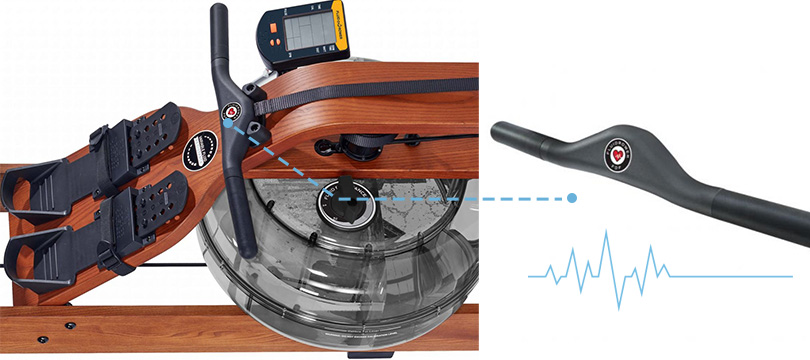
Most rowing machine models come with telemetry-enabled consoles. Such consoles can track your heart rate from a compatible chest strap or armband transmitter, using Bluetooth or ANT+ connection technology.
HRM Chest Strap
Chest-strap models use an electrical pulse to track your heart rate. You need to connect the chest strap to a watch or phone app to get the readings.
The American College of Cardiology conducted a study to test and determine which type was the most effective. The chest strap proved the most accurate of the heartrate-measuring devices, with a 99.6% accuracy.
However, the chest strap must be worn under clothing at the level of the inferior sternum. It has a bad reputation for being uncomfortable and causing you to chafe. But with a good HRM, you’ll forget it’s even there until you check your reading at the end of your workout session.
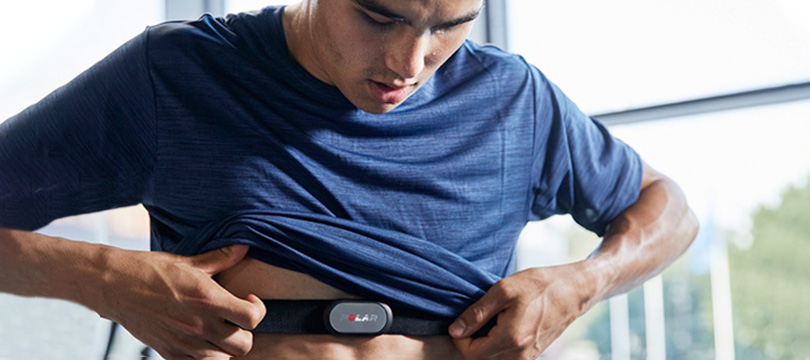
HRM Armband
Armband models adopt optical heart rate technology to track your heart rate. They are normally integrated with Bluetooth and/or ANT+ connection technology.
It’s secure to wear on the forearm and more comfortable than the chest strap.
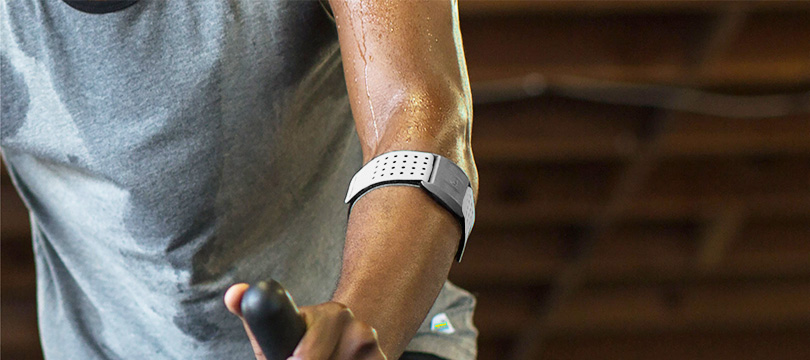
HRM Watch
Wrist monitors use your radial artery or light sensors to measure heartbeat. They can be effective, too.
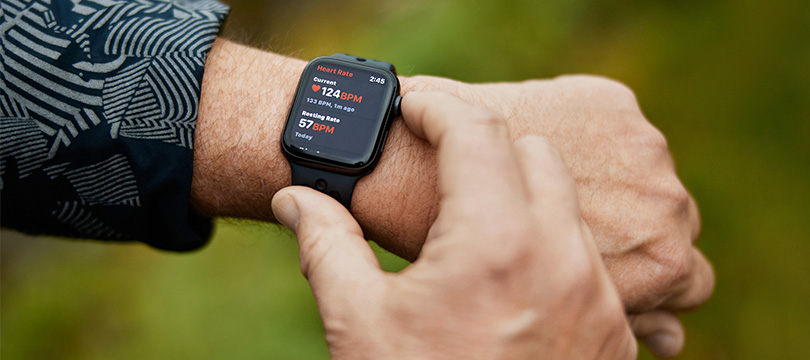
HRM Earbuds
Earbud heart rate trackers use light to measure blood flow the HRM sensor (most commonly are optical sensors) can collect much info. These earbuds are really convenient, but they are not mature yet. They are in the first phase of development and more polish is needed.

5.3 What HRM Type is Best for Heart Rate Training on a Rower?
With so many options available, it can be daunting to choose a heart rate monitor.
If you’re doing regular exercises such as steady-state training on a rowing machine, a photoelectric type wristwatch or bracelet could be more convenient for you to track your heart rate.
However, when doing irregular training forms such as HIIT (high-intensity interval) and pyramid, it is advised to wear a HRM chest strap.
Because photoelectric monitoring is prone to be affected by vibration, environment, and other interferences, making it impossible to accurately monitor heart rate in real-time.
However, the chest belts take advantage of electrodes generated by heart beating to amplify the signal and directly restore the heart rate value. Hence, the heart rate monitoring by chest belts is more timely and accurate which is especially important when exercising.
6. Reap the Rewards of Heart Rate Training
Many rowing machines have various ways to monitor your heart rate as described above. How can you use this information to reap the rewards of heart training?
You can simply use your heart rate as a reference to how your workout is going. Besides, there are well-defined programs and guidelines available. You may utilize and vary your workout to keep your heart rate within a target heart rate training zone.
If you’re not feeling any exertion or your heart rate is too low, pick up the pace. If you’re worried that you’re pushing yourself too hard or your heart rate is too high, back off a bit.
During your workout, you can increase the intensity of the activity and repeat until you are in your target zone. With practice day by day, you will be able to tell by the exercise intensity whether you are training in your target heart rate zone or not.
You’ll get the most from your rowing workouts if you’re exercising in the proper heart rate zone for your fitness goals.
Important Note

Some drugs and medications affect heart rate, meaning you may have a lower maximum heart rate and target zone. If you have diabetes, a heart condition, or take medication, please check with your doctor before you start a workout program based on heart rate.
Row Smarter and Happy Training!

